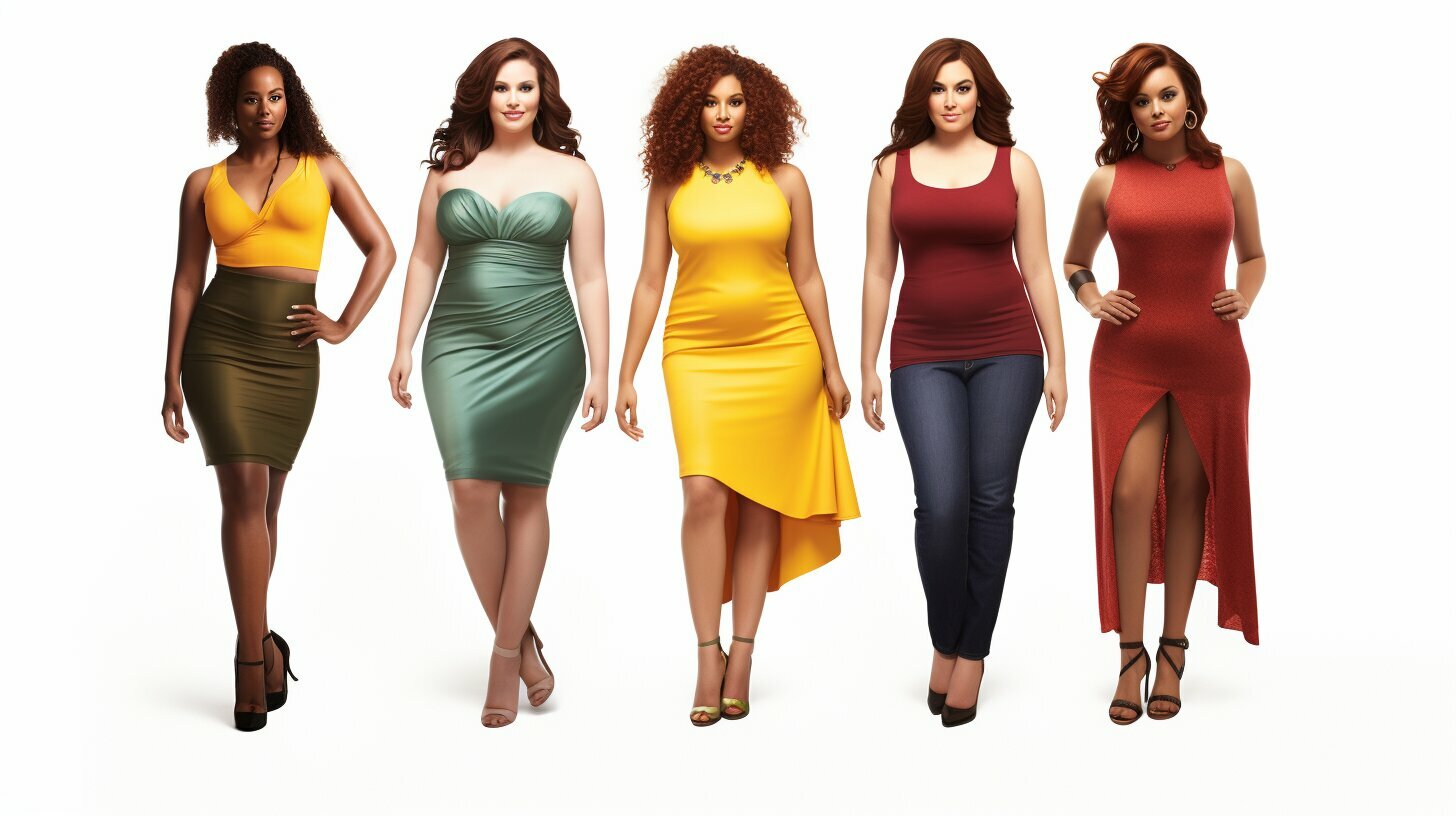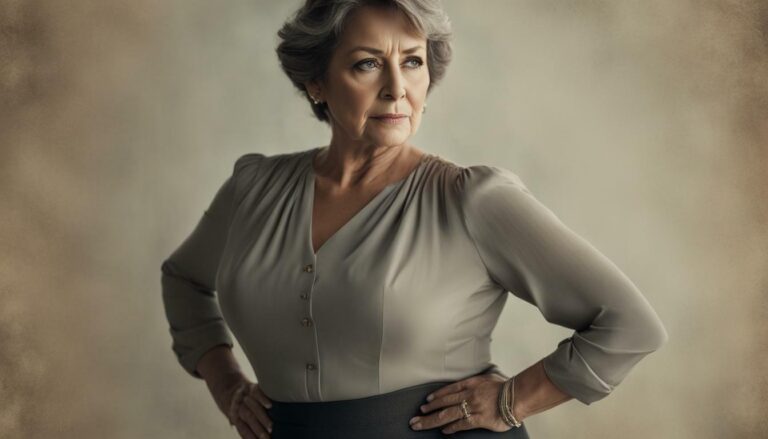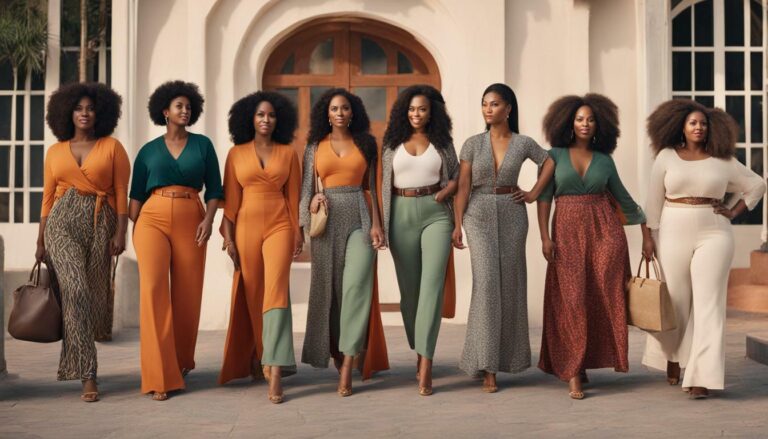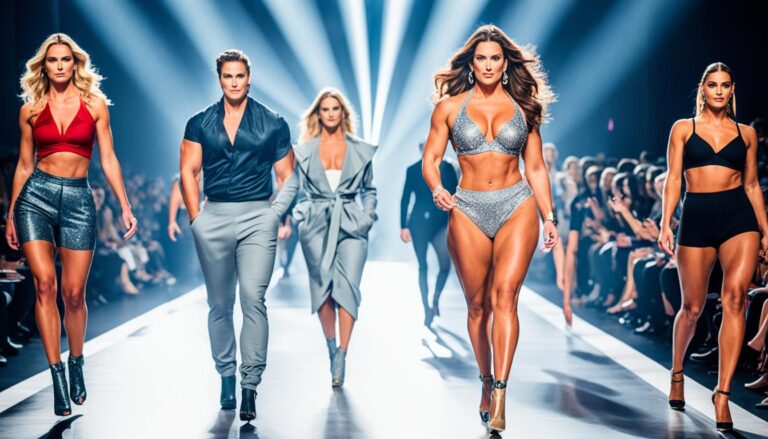What body type is trendy?
The concept of the “ideal body shape” for women has evolved over time, reflecting changing trends and societal norms. From the hourglass figure of the early 1900s to the androgynous look of the 1990s, body types have been influenced by popular culture, fashion, and media. In recent years, celebrities like Kim Kardashian have popularized the hourglass figure, while the early noughties trends of low-rise jeans and crop tops have made a comeback in 2022. Body trends often focus on the midriff and emphasize sculpted stomachs and elongated torsos. Achieving these looks may involve a combination of healthy lifestyle choices, exercise, and cosmetic treatments like liposuction or body sculpting procedures.
Key Takeaways:
- Trends in body types have changed throughout history, influenced by popular culture and media.
- Currently, the hourglass figure and midriff-baring fashion are trendy.
- Achieving trendy body types may require a combination of healthy lifestyle choices, exercise, and cosmetic treatments.
- It’s important to prioritize individual body confidence and self-acceptance.
- Challenging harmful beauty norms and promoting inclusivity are essential for fostering a positive and accepting society.
The Ideal Body Types of the Past: A Trip Down Memory Lane
Throughout history, the ideal body shape for women has undergone many changes, reflecting shifting beauty standards and societal expectations. These changes have been influenced by popular culture, fashion trends, and the perception of femininity. Let’s take a journey through time and explore the evolution of body ideals.
“Fashion is a form of ugliness so intolerable that we have to alter it every six months.” – Oscar Wilde
The Early 1900s: The Gibson Girl
In the 1910s, the Gibson Girl with her looping figure-8 silhouette was considered the epitome of beauty. This ideal emphasized a small waist, rounded hips, and a full bust. Women of this era resorted to corsets to achieve the desired hourglass shape, despite the discomfort and health risks involved.
The Roaring Twenties: The Flapper Style
The 1920s brought about a shift in body ideals with the emergence of the flapper style. This new ideal featured smaller breasts and hips, with a more boyish figure. The flapper look celebrated a slim and androgynous physique, reflecting the changing attitudes towards femininity and women’s roles in society.
The 1950s: The Hourglass Figure
The 1950s celebrated the return of the hourglass figure, with a focus on a small waist, full breasts, and rounded hips. This ideal, popularized by iconic figures like Marilyn Monroe, emphasized curves and femininity. The hourglass shape became synonymous with sensuality and glamour.
| Era | Ideal Body Type |
|---|---|
| 1910s | Gibson Girl – Hourglass figure |
| 1920s | Flapper Style – Boyish figure |
| 1950s | Hourglass Figure – Curvy silhouette |
As we can see, body ideals have varied significantly throughout history, influenced by cultural shifts, fashion trends, and societal expectations. The continuous evolution of these ideals demonstrates the dynamic nature of beauty standards and the importance of embracing diverse body types.
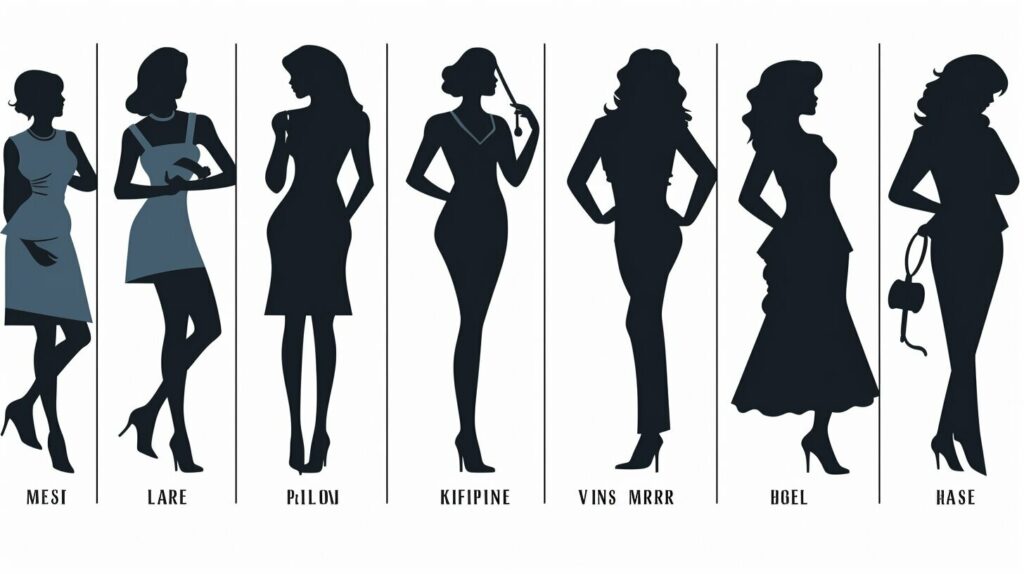
The Latest Body Type Trends for 2022
In 2022, the fashion world is embracing a variety of body type trends that are set to make a statement. From the return of midriff-baring fashion to a focus on more skin and less fabric, emerging fashion styles are pushing boundaries and challenging traditional norms.
The trend of midriff-baring fashion takes inspiration from iconic figures like Paris Hilton, Britney Spears, Shakira, and Fergie. With the resurgence of low-rise jeans and crop tops, the emphasis is on an elongated torso and a sculpted stomach. This trend leans towards leaner legs and well-sculpted thighs as well. The aim is to create a fashionable midriff that exudes confidence and style.
In addition to the midriff exposure trend, we can expect to see more skin and less fabric in general. Bra tops, tube tops, and micro miniskirts are making a comeback, allowing for a bold and daring sense of fashion. These emerging fashion styles embrace an androgynous frame, breaking away from traditional gender norms and celebrating individuality.
To get a better understanding of the predicted body shape trends for 2022, let’s take a look at the table below:
| Trend | Style |
|---|---|
| Midriff-baring fashion | Low-rise jeans, crop tops |
| More skin, less fabric | Bra tops, tube tops, micro miniskirts |
| Androgynous frame | Gender-neutral fashion, breaking traditional norms |
With these latest body type trends, individuals have the opportunity to express themselves and showcase their unique style. Whether it’s through midriff-baring fashion or embracing androgynous frames, 2022 is all about celebrating individuality and redefining traditional beauty standards.
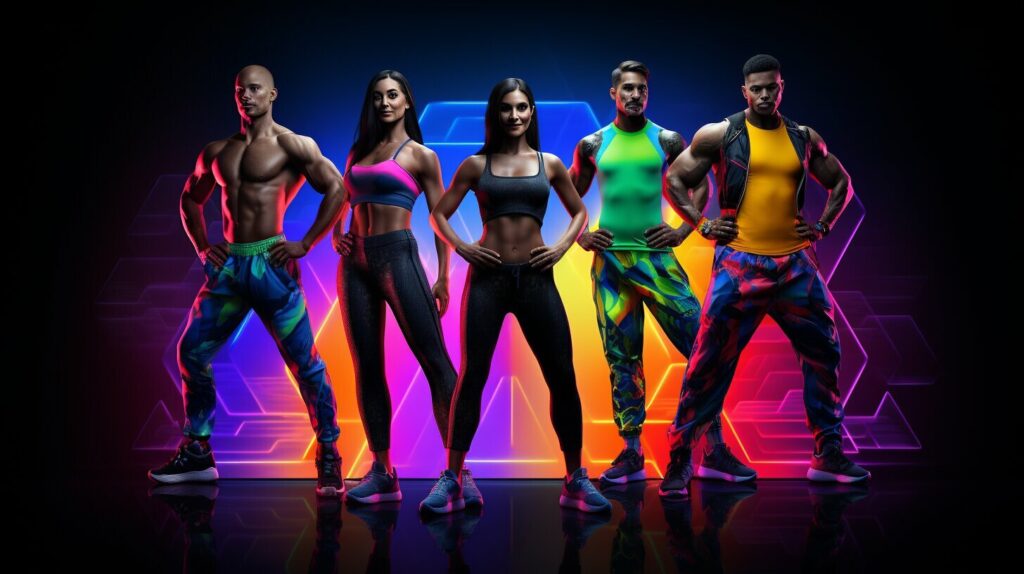
Achieving the Latest Body Type Trends
To keep up with the latest body type trends, it is essential to make healthy lifestyle choices and incorporate diet and exercise into your routine. Achieving a toned stomach and an elongated torso can be accomplished through a combination of targeted exercises and a balanced diet. Pilates, for example, is known for its focus on core strength and can help sculpt and define the abdominal muscles.
In addition to exercise, adopting a nutritious eating plan can contribute to achieving your desired body type. Incorporating whole foods, lean proteins, fruits, and vegetables into your diet can support overall health and fitness goals. It is important to consult with a healthcare professional or a registered dietitian to develop an individualized plan that suits your specific needs and preferences.
While lifestyle choices play a significant role in shaping your body type, there are also minimally invasive treatments available for individuals seeking additional body shaping options. Procedures such as Vaser liposuction or Renuvion can help remove stubborn fat and tighten the skin, enhancing your body’s natural contours.
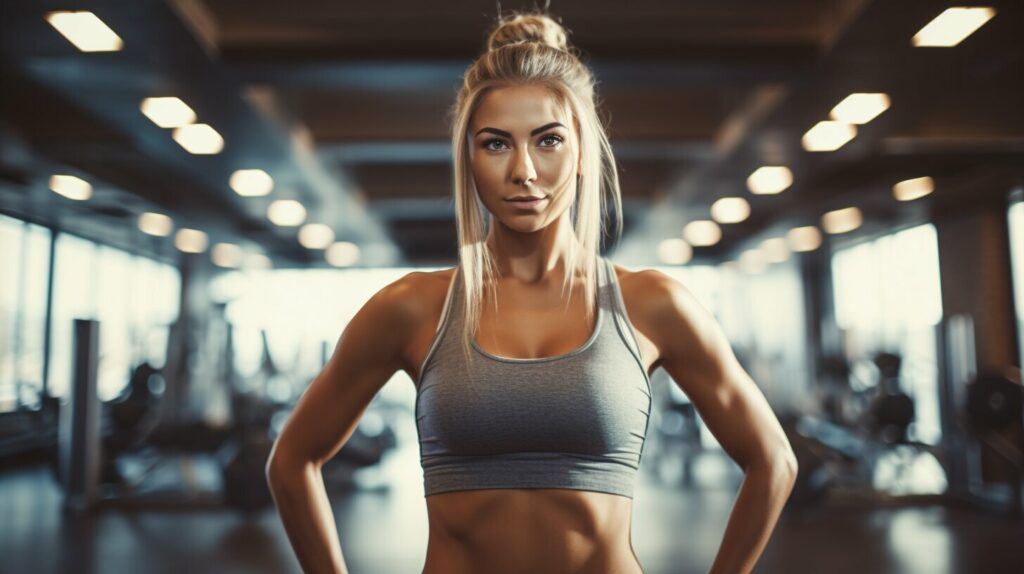
Maintaining a Balanced Approach
It is important to approach body type trends with a balanced mindset. Remember that everyone’s body is unique, and what works for one person may not work for another. Focus on your own health and well-being, rather than striving to meet external expectations.
While it can be exciting to follow the latest trends, it is crucial to prioritize your mental and emotional well-being. Take the time to practice self-care, practice positive self-talk, and surround yourself with a supportive community that promotes body positivity and acceptance.
Conclusion
Achieving the latest body type trends involves a combination of healthy lifestyle choices, such as regular exercise and a nutritious diet, along with potential minimally invasive procedures for targeted body shaping. However, it is important to remember that true beauty comes from self-acceptance and embracing your individuality. Prioritize your mental and emotional well-being above external trends, and strive for a balanced approach to body positivity and self-confidence.
Mainstream Culture and Cultural Appropriation in Fashion
Mainstream culture has a significant influence on shaping body ideals and trends. However, this influence often leads to cultural appropriation, which involves adopting and commodifying certain features or styles from marginalized communities for profit. One example of this is the Kardashians’ role in normalizing and popularizing “Blackfishing,” where they alter their appearance to appear Black through makeup, cosmetic surgery, and digital editing. This commodification of Black culture perpetuates the objectification and hypersexualization of Black women’s bodies, which has a damaging impact on non-white communities.
“Cultural appropriation is a form of modern-day colonization, where dominant cultures take elements from marginalized cultures without giving credit or understanding their significance,” says cultural critic Jane Smith.
It is essential to recognize and challenge these harmful patterns in the fashion industry. By promoting inclusivity and embracing diverse body types, we can work towards dismantling these beauty norms and creating a more equitable and accepting society. The fashion industry should make a conscious effort to collaborate with and uplift designers and creators from marginalized communities, rather than appropriating their cultural elements for profit.
The Role of the Kardashians
The Kardashians have played a significant role in shaping mainstream body ideals and trends. However, their influence has been controversial, especially regarding cultural appropriation. Their alterations of their appearance to mimic features traditionally associated with Black women have sparked conversations about the harmful effects of such actions. It is crucial to hold influential figures accountable and encourage greater representation and respect for diverse cultures and body types in the fashion industry.
Overall, it is important to remember that mainstream culture should embrace and celebrate diversity instead of appropriating and commodifying it. By promoting awareness, education, and inclusivity, we can challenge harmful beauty norms and foster a more inclusive and accepting society.
Cultural Appropriation Table
| Issue | Description | Impact |
|---|---|---|
| Appropriation of traditional clothing and accessories | Adoption of culturally significant garments or accessories without understanding or respecting their cultural significance | Disrespects the cultural heritage of marginalized communities |
| Use of traditional hairstyles | Adoption of traditional hairstyles without acknowledging their cultural roots | Perpetuates stereotypes and fails to give credit to the communities that originated the styles |
| Adoption of cultural practices | Taking on cultural practices or rituals without understanding their historical or spiritual significance | Reduces these practices to mere trends, undermining their cultural significance |
The Importance of Individual Body Confidence
Body confidence and self-acceptance play a crucial role in promoting a positive and healthy mindset towards our bodies. Instead of fixating on societal beauty standards, it is important to embrace diverse body types and define beauty standards for ourselves. By cultivating body confidence, we can foster a sense of self-assurance and empower others to do the same.
Embracing diverse body types involves celebrating the uniqueness of each individual and recognizing that beauty comes in all shapes and sizes. It means challenging the notion of an “ideal” body and instead focusing on feeling happy and comfortable in our own skin. When we accept and love ourselves as we are, we radiate confidence that is not dependent on external validation or fitting into a specific mold.
Defining beauty standards for ourselves allows us to prioritize our own well-being and happiness. It means rejecting the pressure to conform to unrealistic expectations and instead embracing our individuality. When we define our own beauty standards, we provide space for self-expression and creativity. We can celebrate our strengths, embrace our flaws, and focus on what makes us unique.
“Beauty begins the moment you decide to be yourself.” – Coco Chanel
Ultimately, body confidence and self-acceptance are important for our mental and emotional well-being. When we cultivate a positive relationship with our bodies, we can experience a greater sense of self-worth and live authentically. By embracing diverse body types and defining beauty standards for ourselves, we can pave the way for a more inclusive and accepting society where every individual is celebrated for who they are.
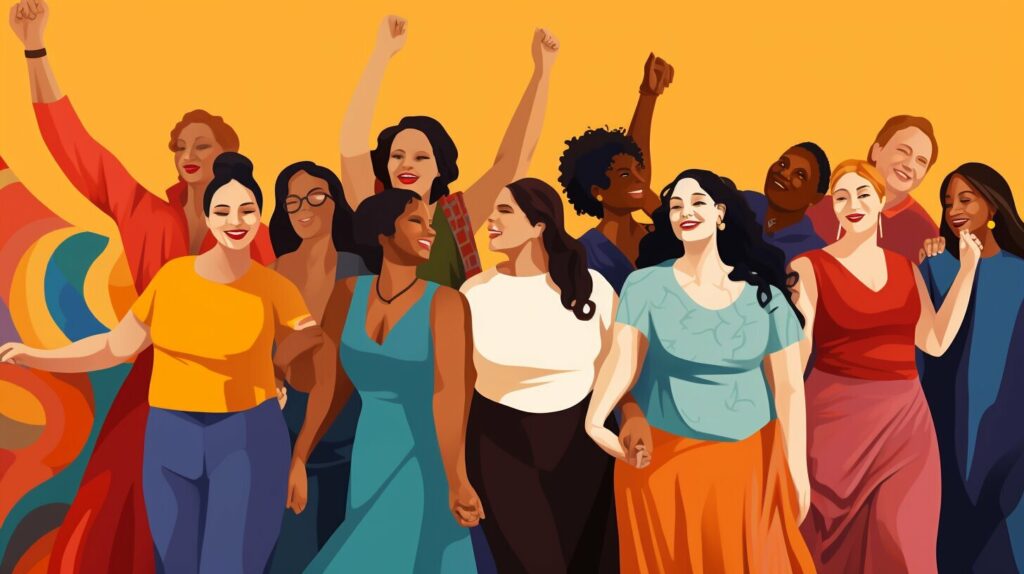
The Power of Body Positivity
Body positivity is a movement that encourages self-acceptance, challenges beauty norms, and promotes inclusivity. It emphasizes the importance of embracing diverse body types and celebrating all individuals, regardless of their size, shape, or appearance. By fostering a culture of body positivity, we can create a society that values and respects each person’s unique beauty.
Body positivity goes beyond accepting our own bodies; it also involves embracing and uplifting others. It means supporting and celebrating individuals of all body types, promoting representation in media and advertising, and challenging harmful beauty standards. When we actively participate in the body positivity movement, we contribute to a more inclusive and empowering environment for everyone.
- Embrace and celebrate your own body, focusing on what you love about yourself.
- Avoid comparing yourself to others and unfollow social media accounts that make you feel insecure.
- Speak up against body shaming and challenge unrealistic beauty standards.
- Support brands and influencers that promote body positivity and inclusivity.
- Encourage open conversations about body image and self-acceptance with friends and loved ones.
Remember, the journey to body confidence and self-acceptance is unique to each individual. It takes time and effort to unlearn societal beauty standards and embrace our true selves. But by prioritizing our mental and emotional well-being, celebrating diversity, and promoting inclusivity, we can contribute to a more positive and accepting society where everyone feels valued and beautiful.
Mental Health and Body Image: The Negative Effects of Body Dissatisfaction
Societal pressure on appearance and the perpetuation of ideal body standards can have a significant impact on individuals’ mental health. The constant bombardment of unrealistic beauty ideals and body trends can lead to body dissatisfaction, low self-esteem, and negative body image. This dissatisfaction can contribute to the development of mental health disorders, such as eating disorders and depression.
Research has shown that exposure to media images that promote narrow beauty standards can result in increased body dissatisfaction among both women and men. The relentless pursuit of an unattainable ideal body can create feelings of inadequacy and self-consciousness. Comparison to these unrealistic standards can lead to negative self-perception and a distorted view of one’s own body.
It is essential to recognize the harmful effects of body dissatisfaction and work towards promoting a more positive body image. This includes challenging societal beauty standards, embracing diversity and inclusivity, and fostering self-acceptance and self-love. By promoting mental wellness and body positivity, we can create an environment that values individuals for who they are, rather than how they look.
| Impact of Body Dissatisfaction on Mental Health | |
|---|---|
| 1 | Increase in depression and anxiety |
| 2 | Development of eating disorders, such as anorexia nervosa or bulimia |
| 3 | Low self-esteem and poor body image |
| 4 | Impaired social functioning and relationship difficulties |
| 5 | Disordered eating patterns, such as binge eating or restrictive eating |
“The relentless pursuit of an unattainable ideal body can create feelings of inadequacy and self-consciousness.”
It is important to prioritize mental well-being and seek support if you or someone you know is struggling with body image issues. Mental health professionals, such as therapists or counselors, can provide guidance and help develop strategies to improve self-esteem and body acceptance. Additionally, building a support network of friends and loved ones who promote a positive body image can also contribute to improved mental health and overall well-being.

In conclusion, the negative effects of body dissatisfaction on mental health cannot be underestimated. The pressure to conform to unrealistic beauty standards can lead to serious psychological distress. It is crucial to challenge these standards, promote inclusivity, and foster self-acceptance. By prioritizing mental well-being and cultivating a positive body image, individuals can thrive in a society that values diversity and individuality.
The Role of Media and Advertising in Shaping Body Perceptions
The media and advertising industries wield significant influence when it comes to shaping society’s perception of body ideals. Through the constant exposure to heavily edited images of models and celebrities, individuals are bombarded with unrealistic beauty standards that can distort their own body image. This perpetuation of narrow beauty norms can have a detrimental effect on individuals’ self-esteem and mental well-being.
Advertising plays a crucial role in promoting and perpetuating beauty ideals by showcasing a limited range of body types that are often unattainable for the majority of people. By consistently featuring only a certain body size, shape, or appearance, advertisements can create a false sense of what is considered beautiful and desirable. This lack of representation of diverse body types further reinforces harmful beauty norms, leading to feelings of inadequacy and dissatisfaction among individuals.
“The constant exposure to unrealistic beauty standards in the media can distort one’s perception of what is considered beautiful or desirable.”
Furthermore, the media’s portrayal of diverse body types is often limited, with certain characteristics being celebrated while others are marginalized or stigmatized. This narrow representation can exclude individuals who do not fit into the narrow spectrum of traditional beauty standards, perpetuating feelings of exclusion and inadequacy. It is essential for media and advertisers to take responsibility for the impact they have on body image and promote inclusive representations of beauty.
By showcasing a wider range of body shapes, sizes, and ethnicities in media and advertising, we can foster a more positive and inclusive environment that celebrates the diversity of human bodies. This shift towards more inclusive representations can help challenge harmful beauty norms and promote body positivity and acceptance for individuals of all backgrounds.
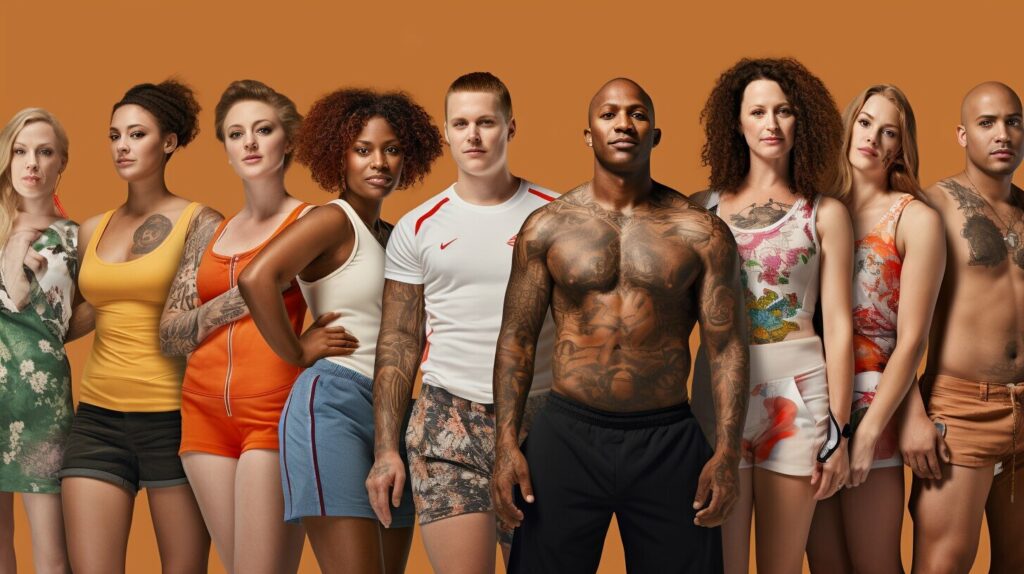
The Impact of Media on Body Image
The media’s influence on body image has been widely studied and documented. Research has shown that exposure to idealized and unrealistic body types portrayed in the media can lead to body dissatisfaction, low self-esteem, and disordered eating behaviors. The constant comparison to these unattainable beauty ideals can create a negative body image and contribute to the development of mental health issues.
It is important for individuals to be critical consumers of media and recognize that the images they see are often heavily edited and do not represent reality. By challenging the narrow beauty ideals perpetuated by the media and embracing diverse representations of beauty, we can foster a healthier and more positive relationship with our own bodies.
The Influence of Advertising on Beauty Standards
Advertising plays a significant role in shaping beauty standards by promoting specific body ideals that are often unattainable for the majority of people. The use of Photoshop and other editing techniques further perpetuates these unrealistic beauty norms, leading to feelings of inadequacy and dissatisfaction among individuals.
It is crucial for advertisers to take responsibility for the impact they have on body image and promote more inclusive representations of beauty. By featuring a diverse range of body types and challenging traditional beauty norms, advertisers can help create a more positive and accepting environment for individuals of all backgrounds.
| Media Influence on Body Image | Advertising and Beauty Standards | |
|---|---|---|
| Positive Impact | Representation of diverse body types in media can promote body positivity and self-acceptance. | Advertising that celebrates diverse beauty standards can help challenge and redefine traditional ideals. |
| Negative Impact | Unrealistic body ideals in the media can lead to body dissatisfaction and low self-esteem. | Advertisements that perpetuate narrow beauty norms can contribute to feelings of inadequacy and exclusion. |
| Call to Action | Media should strive to represent a wider range of body types and challenge harmful beauty norms. | Advertisers should promote inclusive representations of beauty and embrace diversity in their campaigns. |
Body Positivity and the Importance of Inclusivity
The body positivity movement has gained significant traction in recent years, advocating for self-acceptance and celebrating all body types. It aims to challenge harmful beauty norms and promote inclusivity in mainstream culture. The movement encourages individuals to embrace their unique selves and reject society’s narrow standards of beauty.
By promoting inclusivity, the body positivity movement celebrates diversity and challenges the notion that there is only one ideal body type. It emphasizes that beauty is not determined by societal standards but is a subjective experience that differs from person to person. This shift in perspective allows individuals to focus on their own well-being and self-acceptance rather than striving to fit into unrealistic beauty ideals.
Challenging beauty norms is an integral part of the body positivity movement. It encourages individuals to question and challenge societal expectations surrounding appearance. This includes rejecting the idea that beauty is limited to specific body shapes, sizes, or features. Instead, the movement celebrates all body types, recognizing that each person is unique and deserving of love and acceptance.
By embracing body positivity and promoting inclusivity, we can create a more accepting and compassionate society. This involves recognizing and challenging harmful beauty standards, promoting diverse representations of beauty in media and advertising, and fostering a culture that celebrates the uniqueness and individuality of every person.
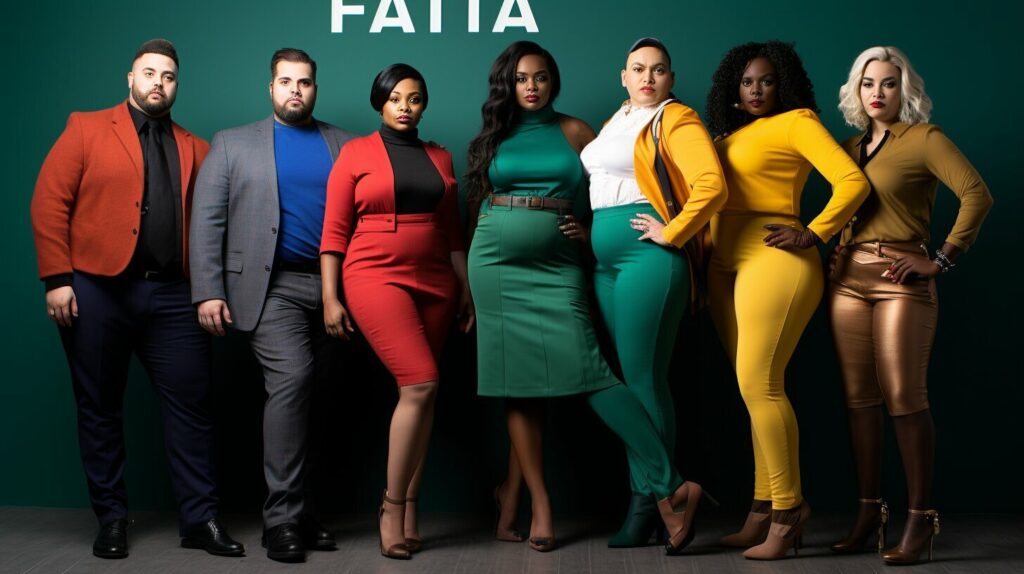
| Body Positivity | Challenging Beauty Norms | Promoting Inclusivity | |
|---|---|---|---|
| Definition | A movement advocating for self-acceptance and celebration of all body types. | Questioning and challenging societal expectations surrounding appearance. | Embracing and celebrating diversity, rejecting narrow beauty standards. |
| Focus | Individual well-being and self-acceptance. | Rejecting the idea of one ideal body type. | Celebrating all body types and promoting love and acceptance. |
| Impact | Improved self-esteem and mental well-being for individuals. | Breaking free from unrealistic and harmful beauty expectations. | Fostering a more accepting and compassionate society. |
“Body positivity isn’t about celebrating one body type over another; it’s about celebrating all body types and embracing the beauty of diversity.” – Anonymous
Why Body Positivity Matters
Body positivity is a crucial movement because it challenges the harmful beauty norms that perpetuate negative body image and self-esteem issues. By celebrating all body types and promoting inclusivity, we can create a world where individuals feel confident, accepted, and worthy, regardless of their appearance. Body positivity encourages us to love ourselves and others unconditionally, fostering a culture that values diversity and authenticity.
The Future of Body Trends and Beauty Ideals
As society continues to evolve, the future of beauty standards and body trends is expected to undergo significant changes. The fashion industry, in particular, is making strides in embracing diversity and challenging traditional beauty ideals. The emphasis is shifting towards promoting inclusivity and celebrating a wider range of body types, representing diverse communities and fostering body positivity. The future of beauty lies in empowering individuals to embrace their unique selves and fostering a more progressive and inclusive culture.
The concept of beauty is no longer confined to a singular ideal. Evolving beauty standards acknowledge that beauty comes in all shapes, sizes, and ethnicities. The fashion industry is recognizing the importance of representation and inclusivity, showcasing models with diverse body types on runways and in advertisements. This progressive approach challenges societal norms and encourages individuals to embrace their own unique beauty.
“The future of beauty lies in empowering individuals to embrace their unique selves and fostering a more progressive and inclusive culture.”
In addition to embracing diversity, the future of body trends will also prioritize sustainability and environmental consciousness. There is a growing awareness of the impact of fast fashion and the need for more ethical practices. The fashion industry is moving towards promoting positive body image and mental well-being while being mindful of the environment. This shift includes promoting sustainable fashion choices, reducing waste, and encouraging a more mindful approach to consumption.
The Future of Beauty Standards
The future of beauty lies in embracing individuality, inclusivity, and sustainability. It is about celebrating diverse body types and promoting positive body image. As the fashion industry continues to evolve, it is expected to be at the forefront of driving these changes. By challenging narrow beauty norms, representing a wider range of body types, and fostering a more positive and accepting society, the future of beauty will empower individuals to embrace their uniqueness and redefine beauty on their own terms.
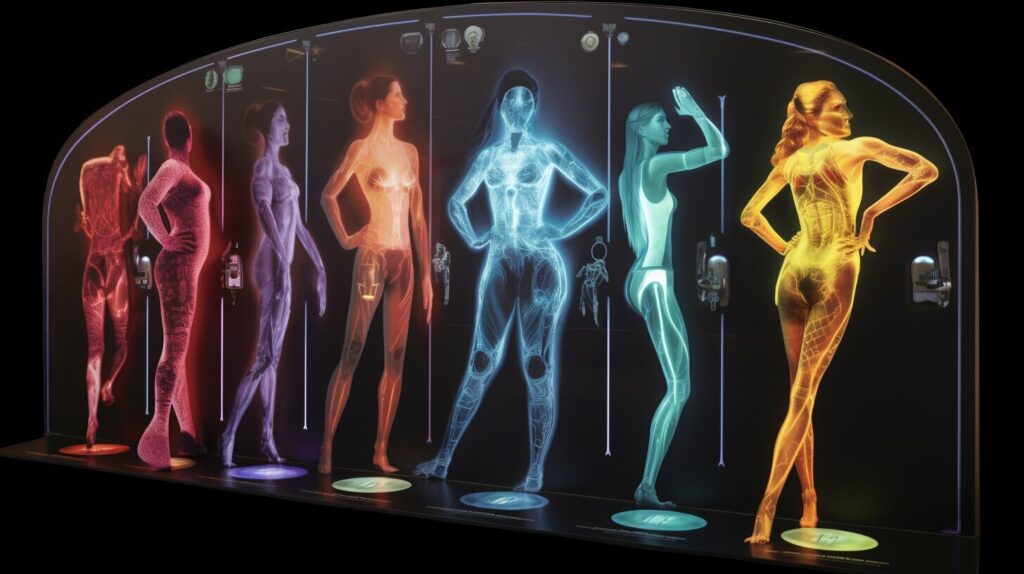
| Evolving Beauty Standards | Future Body Trends | |
|---|---|---|
| Representation | Recognition of diverse beauty | Celebration of all body types |
| Focus | Embracing individuality and uniqueness | Promoting inclusivity and diversity |
| Sustainability | Increasing awareness of ethical practices | Mindful fashion and environmental consciousness |
Conclusion
In conclusion, the concept of the “ideal body shape” has evolved over time, reflecting changing trends and societal norms. From the hourglass figure of the early 1900s to the androgynous look of the 1990s, body types have been influenced by popular culture, fashion, and media.
The latest body type trends for 2022 focus on the midriff, elongated torsos, and more skin with less fabric. Achieving these trends may involve adopting a healthy lifestyle, engaging in exercise, and considering cosmetic treatments. However, it is crucial to prioritize individual body confidence and self-acceptance, recognizing that beauty comes in all shapes and sizes.
Challenging harmful beauty norms, promoting inclusivity, and celebrating diverse body types are essential steps towards fostering a more positive and accepting society. Remember, the best body shape is the one that makes you feel happy and comfortable in your own skin.
FAQ
What body type is trendy?
The latest body type trends for 2022 include a focus on the midriff, elongated torsos, and more skin with less fabric. Achieving these trends can involve a combination of healthy lifestyle choices, exercise, and cosmetic treatments.
How have body ideals changed throughout history?
Throughout history, body ideals have evolved, reflecting changing trends and societal norms. From the hourglass figure of the early 1900s to the androgynous look of the 1990s, body types have been influenced by popular culture, fashion, and media.
What can I do to achieve the latest body type trends?
To achieve the latest body type trends, you can consider making healthy lifestyle choices, such as adopting a nutritious diet and regular exercise. Additionally, cosmetic treatments like liposuction or body sculpting procedures can help enhance your desired look.
How does mainstream culture influence body ideals?
Mainstream culture plays a significant role in shaping body ideals and trends. However, it is essential to recognize and challenge harmful patterns, such as cultural appropriation and the perpetuation of unrealistic beauty standards.
Why is individual body confidence important?
Individual body confidence is crucial because beauty standards are constantly changing and there is no one-size-fits-all definition of beauty. Embracing and celebrating diverse body types is essential for promoting inclusivity and dismantling harmful beauty norms.
What impact do beauty standards have on mental health?
Constantly striving to meet unrealistic and ever-changing beauty standards can lead to body dissatisfaction, low self-esteem, and even the development of mental health disorders such as eating disorders. It is important to promote positive body image and challenge unrealistic standards for better mental well-being.
How does media and advertising influence body perceptions?
Media and advertising play a significant role in shaping society’s perception of body ideals. Constant exposure to unrealistic and heavily edited images can distort one’s perception of beauty. Lack of representation of diverse body types further reinforces narrow beauty standards.
What is the body positivity movement?
The body positivity movement advocates for self-acceptance and celebrates all body types. It seeks to challenge harmful beauty norms and promote inclusivity in mainstream culture, embracing diverse representations of beauty.
What does the future hold for body trends and beauty ideals?
The future of body trends is likely to be more inclusive, celebrating a wider range of body types and representing diverse communities. The focus on sustainability and ethical practices is also expected to impact beauty ideals, promoting positive body image and environmental consciousness.
